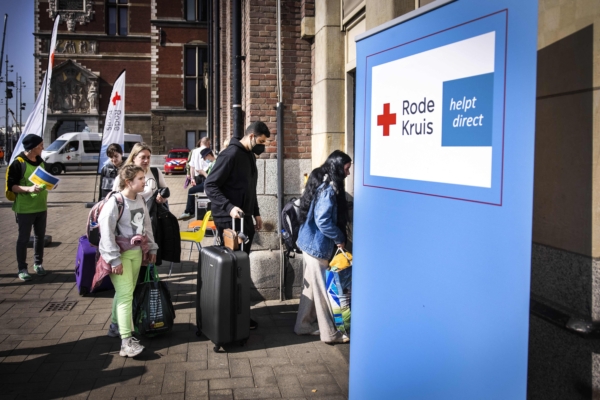Due to the rapid growth of foreign immigrants, the population of the Netherlands has reached 18 million. However, the native population is actually experiencing negative growth, as various social reasons and a loss of traditional culture are making Dutch people increasingly unwilling to have children.
According to statistics, the population of the Netherlands increased from 17 million in 2016 to 18 million over an 8-year period. Since 2022, population growth has been entirely driven by a higher number of immigrants entering the country compared to those leaving. During the same period, the natural population has seen a decrease, with fewer babies being born than the number of deaths.
The latest statistics released by the Central Bureau of Statistics (CBS) in August revealed that in the past six months, population growth “is entirely due to foreign immigrants,” with nearly 10,000 immigrants. Overall, more people are coming to the Netherlands than leaving. Currently, the main contributors to population growth come from immigrants from Ukraine and Syria.
The Bureau of Statistics projects that by 2050, the population will decrease to 17 million. Population growth in the coming decades will continue to be driven by people with immigrant backgrounds, while the number of native residents will decline. Some remote areas are expected to see a 16% decrease in population by 2040, with the regions of Zeeland-Flanders, southern Limburg, and the northern and eastern parts of Groningen experiencing the highest decline.
The official explanation for the decrease in population numbers is that there are fewer births; younger and more educated individuals are moving to larger cities and are unwilling to have children.
The majority of immigrants in the Netherlands come from European countries, but the number of Europeans leaving the Netherlands is also significant. Among non-EU countries, Syria has the largest immigrant population at around 10,000 people; additionally, approximately 7,000 people have come from Ukraine to the Netherlands; other immigrants mainly come from Turkey, Romania, and South Africa. Whether high-skilled migrants or refugees, they all play a key role in the population growth of the Netherlands.
Data from the Statistics Bureau shows that the number of babies born in the first half of this year has increased compared to the same period last year, reaching 80,000, but the number of deaths is higher, at around 90,000.
The National Population Development Commission of the Netherlands stated that if the population could “modestly increase” in the coming years, the future outlook would be more objective. The government should encourage childbirth, increase the population, and aim to reach a target of 19 million people by 2050. A declining population would lead to significant societal issues related to an aging population, such as reduced attractiveness for businesses, difficulty in finding appropriate local employees leading to closures, increased vacant houses, falling property prices, fewer healthcare facilities but higher demand, a decrease in public transport users resulting in higher operating costs, and more. Therefore, ensuring a certain population size is crucial to guaranteeing sufficient housing, healthcare, and education for communities and local residents, thus ensuring a higher quality of life.
Hence, the government needs to regulate the scale and form of immigration. Commission Chair Richard van Zwol stated that future policies must be based on “high-quality economy and broad prosperity” and that we “must make choices on immigration issues,” prioritizing economic quality and social cohesion. The hope is that “the lack of infrastructure and inequalities between social groups will be limited as much as possible.”
Since 2010, the birth rate in the Netherlands has been continuously decreasing. The average fertility rate per woman was 1.8 children in 2010, dropping to 1.4 children by 2023. The average fertility rate among Dutch women is 1.5 children, whereas for women from Morocco and Turkey, it is significantly higher.
There are many reasons for the decline in fertility rates among native Dutch, with one major factor being economic issues: daily expenses and housing costs have become burdensome, leaving many families struggling financially, especially young families who lack sufficient funds to raise the next generation. While the government does provide some childcare subsidies, they are often inadequate and fail to alleviate the economic pressure brought on small families by childbirth. Furthermore, the increased level of education among women and the greater employment opportunities compared to the past have led many professional women to postpone childbirth for the sake of their careers. Additionally, the Netherlands has always emphasized “freedom,” with many couples preferring to enjoy their time as a couple without the responsibility of children.

